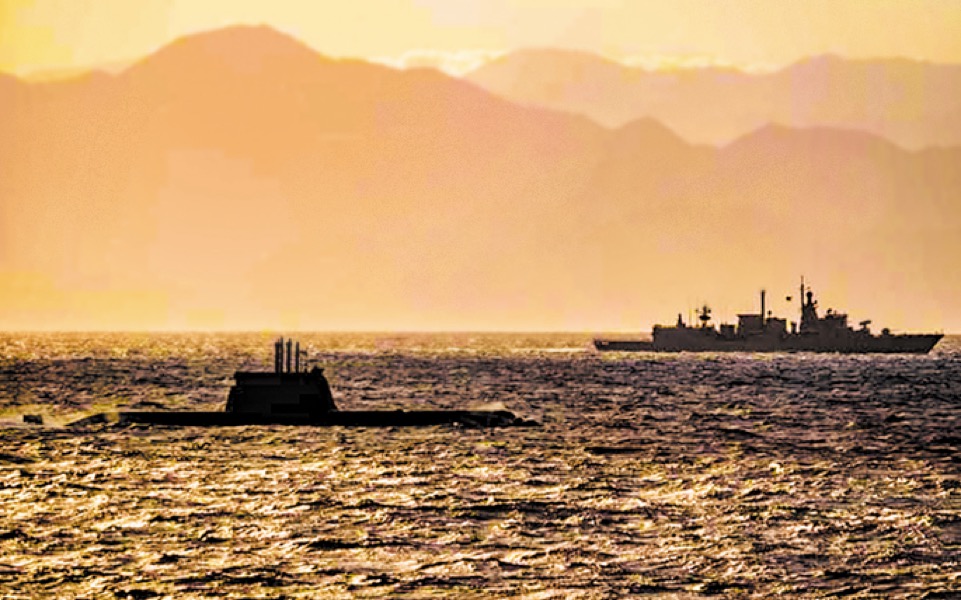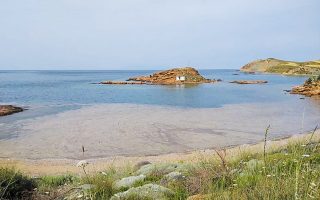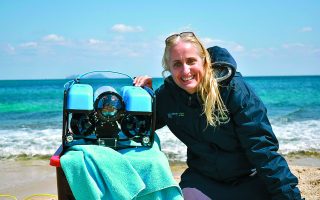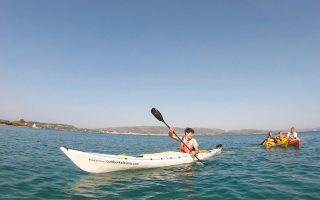A ‘green revolution’ in Greece’s armed forces
Measures to safeguard the natural environment have become part of the handbook in the Hellenic Army, Navy and Air Force, official explains
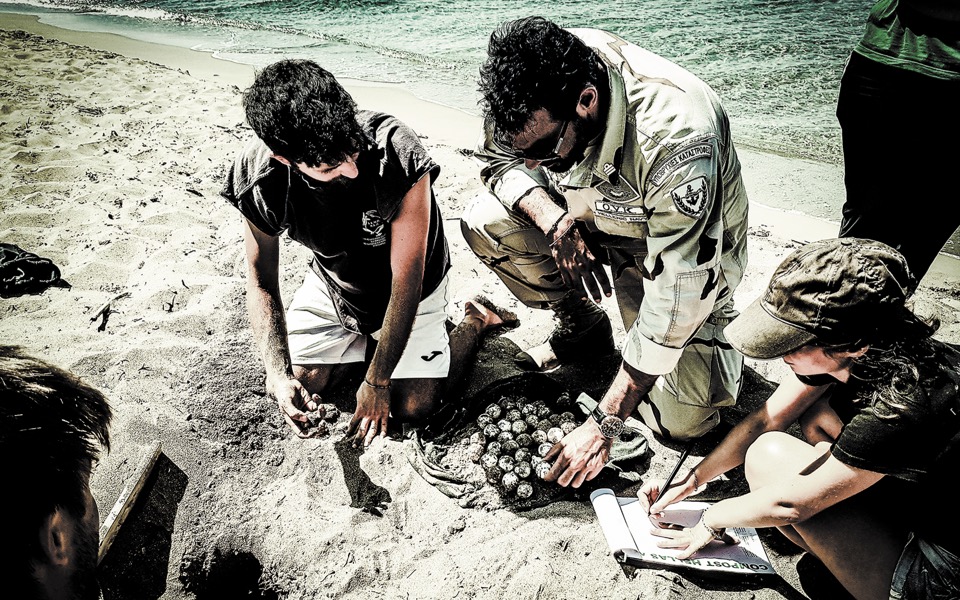
An impressive shift in mentality has started to take root in the Greek armed forces over the past few years, with initiatives to protect Natura 2000 areas and other habitats that are important for biodiversity, as well as adapting to climate change, becoming priorities, not just in theory, but as a part of the operational handbook.
Some of these initiatives, such as the Hellenic Navy recording the sounds made by marine mammals, are pioneering and have the prospect of contributing to scientific research. Others also involved other players outside the armed forces, such as recording the location of protected areas and shipwrecks on nautical maps.
The Defense Ministry drafted its first piece of environmental policy 14 years ago. It was revised in 2014 and again in 2020, raising the bar higher than ever.
“We now know that climate change is going to affect the way the armed forces of this country work and operate. This is a new environmental reality that is expected to shape geopolitics and have a direct impact on the world economy, trade and security,” Commander Panagiotis Tripontikas, from the Defense Ministry’s Department of Infrastructure and Environmental Protection, tells Kathimerini.
“The duties we have to carry out, the work we do and the way we train are already changing as we adapt to this new reality. Likewise, the Defense Ministry’s environmental policy stresses that nature and biodiversity in their entirety are protected via the European network Natura 2000 and that the armed forces have a fundamental obligation to safeguard the habitats and the flora and fauna they host,” he adds.
These policies are incorporated into the armed forces’ modus operandi in a number of ways, from changes to how exercises and operations are carried out, to daily activities and energy management.
Marine mammals
“The navy, for example, has developed a series of standard operating procedures that have to do with the protection of marine mammals and endangered species from underwater explosions, from sonars on ships and submarines and other military activities. These instructions contain a description of all the protected areas and the procedures for minimizing the impact of military activities,” says Tripontikas and goes on to cite a few examples.
Warships and submarines, he explains, control any activities that may damage the environment when they are in protected waters. “Generally, exercises in such areas are avoided and warships will not drop anchor in protected areas or at a distance of less than 1,000 yards from them, particularly when it comes to protecting sea grass meadows. When speedboats spot an endangered animal, moreover, they will reduce their speed and alter their course so as not to disturb them,” he adds.
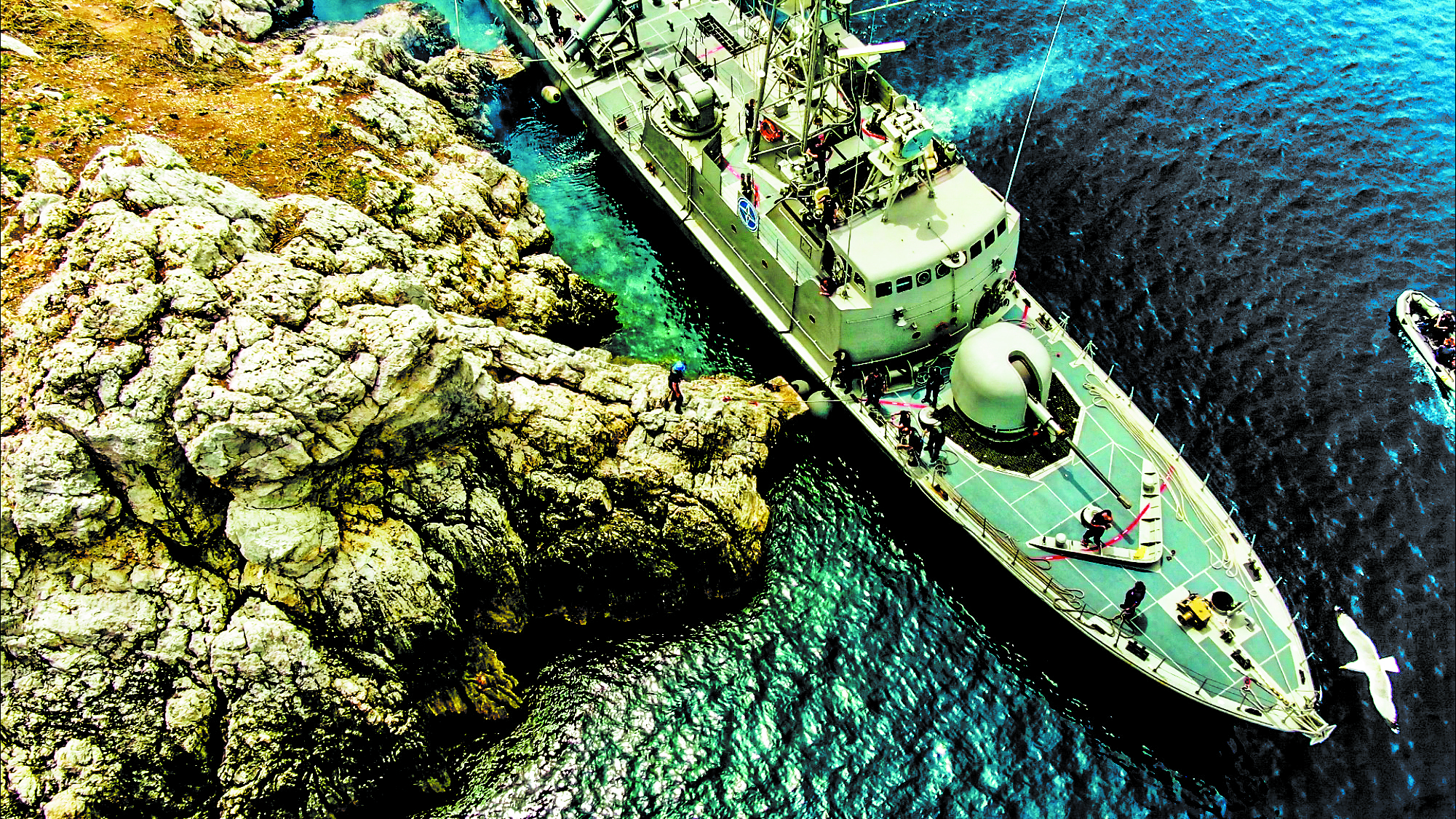
Waste management is another important element of the policy. “Environmentally sound waste management, so that trash does not end up in the sea, is essential to protecting the coastal zone. Knowing the composition of waste is also necessary to managing it properly. This is why since 2018 warships have been mandated to reduce their output of waste by keeping a detailed log and taking steps toward an immediate reduction, even by banning single-use plastic,” says Tripontikas. “We are the hosts of our seas and as such have a duty to defend them from every threat.”
It is clear, however, that changing the way the armed forces operate with orders coming from above, is not enough to bring about a radical change in mentality. The challenge now, therefore, is to turn the focus onto educating staff – and, why not, conscripts – about crucial environmental issues, as is already the case in many NATO member-states. How is this prospect viewed in Greece?
“Improving knowledge, developing skills and the mental and moral capabilities displayed by the officers of the armed forces are things that are cultivated through the training they receive over the course of their career,” explains Tripontikas.
“For the training to be regarded as truly successful, we believe that the trainee should also be interested and, therefore, motivated. We all know that alienation from the natural environment has a way of morally and mentally discombobulating people, but our officers operate, act and function in the natural environment. We also organize educational conferences and seminars and participate in the training programs of the National Center of Public Administration and Local Government, while the lifelong learning we receive is, perhaps, the most important, because that is where we are inspired by example,” he adds.
In line with this framework, the Ministry of Defense in 2017 introduced an initiative called Friend of the Environment, which consists of an annual event that awards units and individuals that have distinguished themselves with their environmental actions. In April, meanwhile, it signed a cooperation agreement with the nongovernmental organization Ecocity aimed at developing strategies and actions for education and raising awareness among the armed forces.
What more, the ministry recently put together a team that is responsible for drafting a roadmap that will point the way forward for the armed forces to adapt to the challenges of climate change. It will be a comprehensive plan, which will include changes in their activities, their equipment and their infrastructure so as to make them more resilient to the impact of climate change, while maintaining their operational capacity in full.
New nautical maps to depict important habitats, historical sites
A common problem in the management and protection of marine areas is that people who break protection rules often do not know – or claim not to know – their exact boundaries. This is about to change, however, as the Hellenic Navy Hydrographic Service prepares to include protected marine areas, Neptune grass meadows and shipwrecks on all nautical maps, but also underwater cultural heritage sites.
Tripontikas describes this as one of the most important initiatives being undertaken right now by the general staff, along with the inclusion of protected areas and habitats on land maps by the Hellenic Military Geographical Service.
“The Hellenic Navy’s Hydrographic Service started recording sites of historical and cultural heritage back in 2018 and is expected in the next few days to also publish the first nautical maps depicting Natura 2000 locations as marine environmental sensitive areas, as well as Neptune grass meadows to the degree that this, in terms of scale, is possible,” explains Tripontikas.
In cooperation with the Culture Ministry, the new maps will also include the location of shipwrecks and underwater archaeological sites.
“Our cultural heritage is valuable and irreplaceable. Historic shipwrecks, and especially those that belong to the Ministry of Defense and the Naval Fund in particular, constitute the underwater legacy of the armed forces,” says Tripontikas, adding that recording these historic locations is a priority, as is the creation of an armed forces “cultural repository.” “Drawing up standards and guidelines for the scientific documentation of shipwrecks is one of the chief aims” of the initiative, he adds.
With all this new information, these maps are expected to become valuable tools in helping shape environmental and cultural policy. Tripontikas says that they will help in the prevention of illegal activities like the theft of antiquities by international and local art smuggling networks, while also helping the work of the coast guard and curbing intentional or unintentional damage to the marine environment.
Recording the creatures of the deep
Another important initiative is the navy’s program for keeping track of marine mammals like whales, dolphins and seals.
“The Hellenic Navy’s Hydrographic Service collected all this information about sea mammal sightings from the different navy units. It also submits this information to NATO,” says Tripontikas.
“As far as the recordings of sound are concerned, these started on our submarines in 2018 with the aim of using that information to fully understand their operational environment. It was a move that prompted the crews to embark on a continuous effort to acquaint and familiarize themselves with the way of life and habits of marine mammals. This, in turn, helped raise awareness among the crews more generally about the protection of the marine environment, as submarines and sea creatures share the same space,” he continues.
“By recording these sounds, a database has been created that helps crews recognize the different species of marine mammals swimming close to their submarines. This information can also be put at the disposal of the scientific community.”
